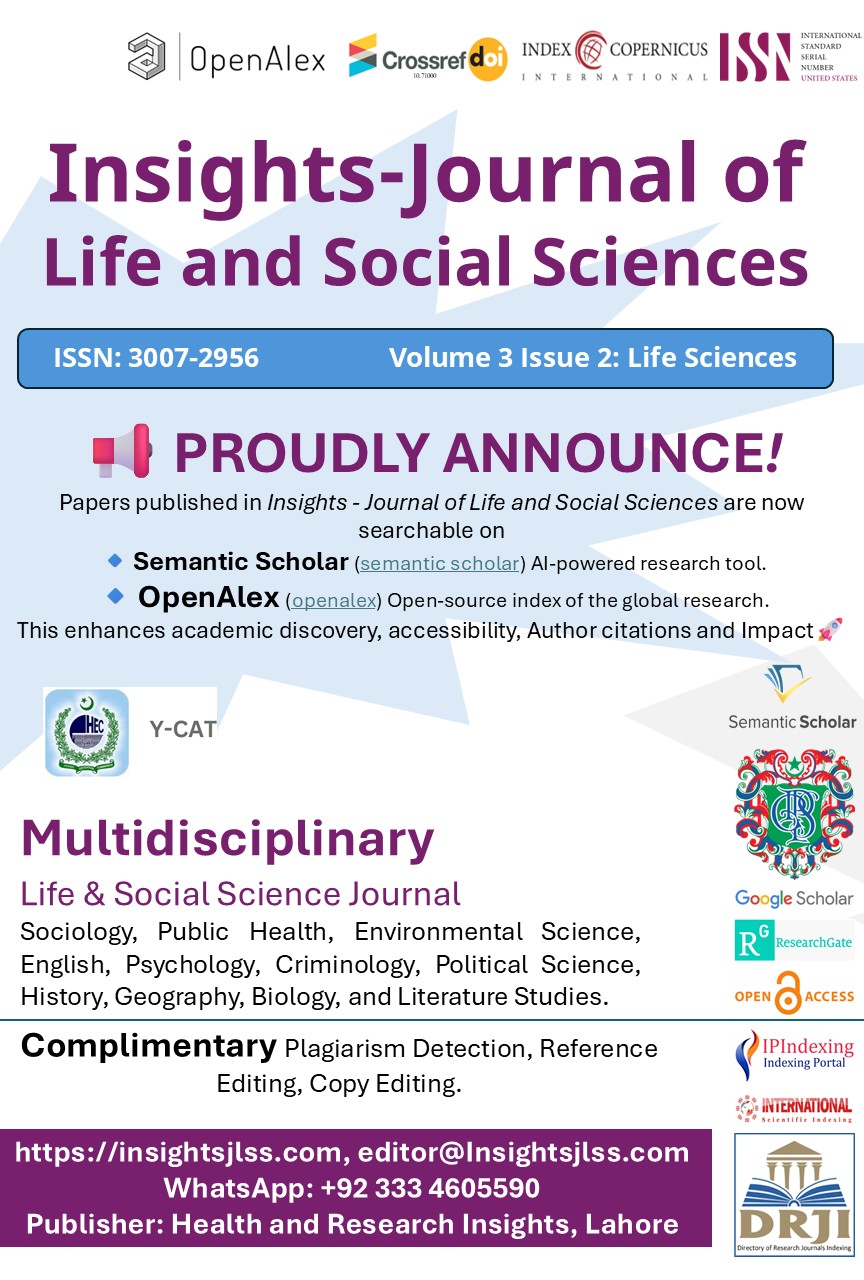COMPARATIVE STUDY ON THE INCIDENCE, RISK FACTORS AND CLINICAL ASPECTS OF HIV/AIDS IN PATIENTS OF QUETTA DISTRICT, BALOCHISTAN.
Main Article Content
Abstract
Background: HIV/AIDS remains a significant global health challenge, with over 38 million individuals affected as of 2022. Despite advancements in antiretroviral therapy (ART), the epidemic persists, particularly in regions with socioeconomic disparities and inadequate healthcare access. In Quetta, Balochistan, marginalized populations, including intravenous drug users and individuals with limited healthcare access, remain at high risk. This study aims to assess the epidemiological trends, risk factors, and clinical characteristics of HIV/AIDS patients in the region to inform targeted interventions.
Objective: To determine the prevalence of HIV, analyze socio-demographic characteristics, identify primary modes of transmission, and assess risk factors among HIV-positive individuals aged 21–60 years in Quetta, Balochistan.
Methods: A cross-sectional study was conducted at Bolan Medical Hospital, Quetta, from March 2024 to March 2025. A total of 305 confirmed HIV-positive patients (207 males, 98 females) were enrolled. Data were collected through structured questionnaires and medical record reviews. HIV screening was performed using fourth-generation ELISA, with confirmatory Western blot testing. Statistical analysis was conducted using SPSS v26, applying chi-square tests and logistic regression, with significance set at p<0.05.
Results: The study reported a 100% HIV prevalence among the screened participants. Males accounted for 68% (n=207) of cases, while females constituted 32% (n=98). The highest prevalence was observed in individuals aged 31–40 years (32.1%), followed by 41–50 years (27.2%), 21–30 years (25.2%), and 51–60 years (15.4%). Intravenous drug use (42%) and unprotected sex (33%) were the leading transmission modes. Socioeconomic determinants included low income, with 72.1% earning less than 10,000 PKR, and illiteracy, which was prevalent in 45% of cases.
Conclusion: The findings highlight an alarming HIV burden in Quetta, driven by high-risk behaviors and socioeconomic disparities. Strengthening harm reduction programs, improving awareness campaigns, and expanding access to ART and preventive healthcare services are crucial in addressing this public health crisis. Targeted policies focusing on early diagnosis and treatment adherence can significantly improve disease management and control transmission rates.
Article Details

This work is licensed under a Creative Commons Attribution-NonCommercial-NoDerivatives 4.0 International License.
